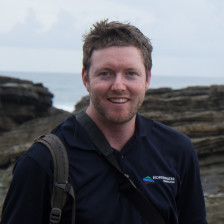Originally posted by Metropolis Books on October 4, 2013
Off the coast of Port-au-Prince, La Gonâve, Haiti, is the seventh largest island in the Caribbean. The population is estimated to be somewhere between 115,000 and 125,000–a number which fluctuates with attrition since the earthquake in 2010. Life on the remote western end is particularly harsh, as there are no inland water sources. The surface geology in this area is a permeable coral rock which breaks through every few feet, channeling precipitation through invisible caves and fissures to the ocean, where it is wasted and lost, and rendering this region of Haiti perpetually destitute. It is a bleak place overlooked by NGOs because drilling for water here is so risky, expensive and almost universally unsuccessful. Donors don’t readily pay for dry holes.
The plains near La Palmiste during the rainy season
Haiti is considered the most water-poor nation on earth, and La Gonâve has perhaps the most tenuous access in the country. Tens of thousands of residents on the western end survive by saving rain water and otherwise walking ten kilometers or more every few days to collect brackish water from springs near the coast. Families drink this water even though the dissolved solids are several times the international standard, and often compromised by biological contaminants. Here, poor quality water causes hypertension and disease, killing early. Mortality rates in La Gonâve hover closer to the mid to upper forties in years of age, as opposed to the mid-fifties, as in most of Haiti.
Our team had come to prepare a hydrogeological survey for an intrepid NGO [Read more…]

